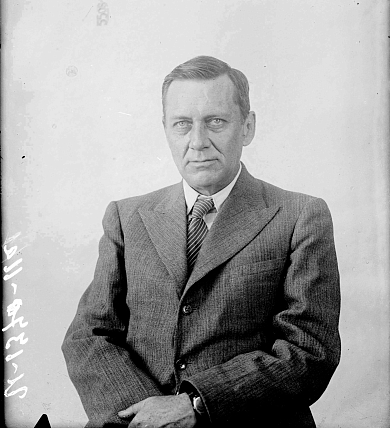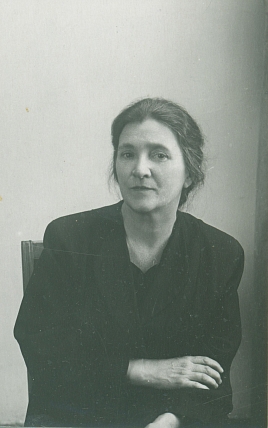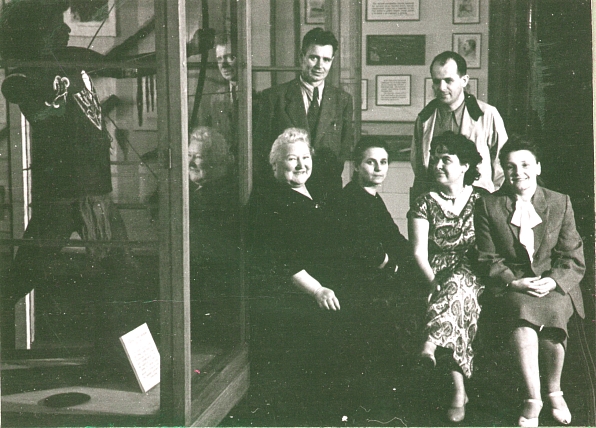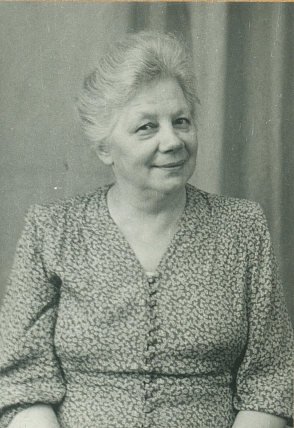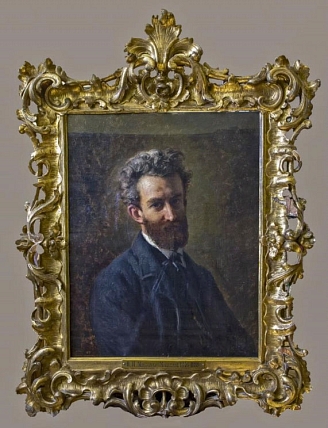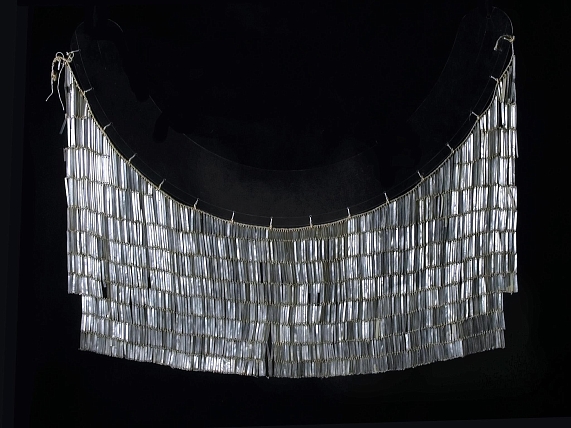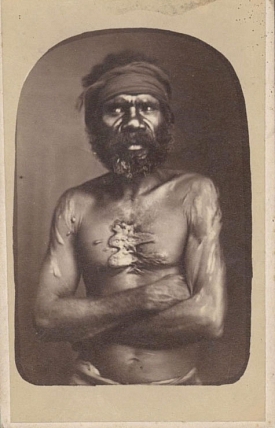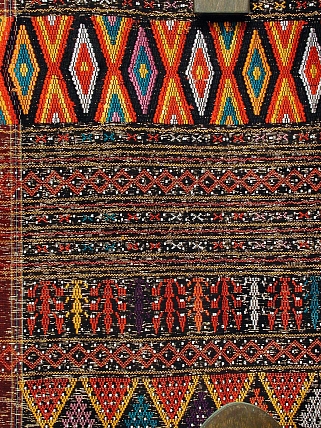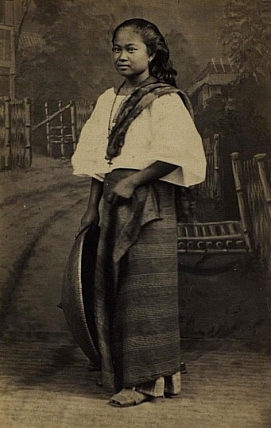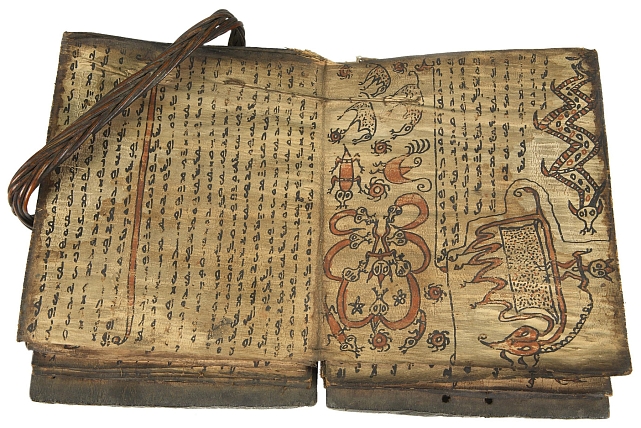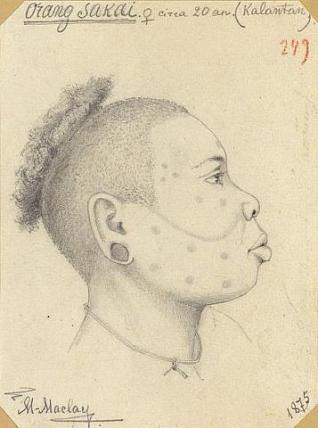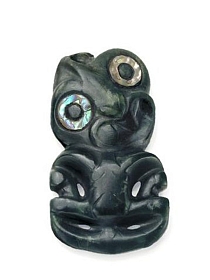- Administration
- Research Departments
- Arctic Research Center
- Europe Research Center
- Department of Australia, Oceania and Indonesia
- Department of America
- Department of Physical Anthropology
- Department of Archeology
- Department of Africa
- Department of East and Southeast Asia
- Department of Caucasus
- Department of Siberia
- Department of Central Asia
- Department of South and Southwest Asia
- Department of the History of Kunstkamera and 18th-century Russian Science (M.V. Lomonosov museum)
- Laboratory of Audiovisual Anthropology
- Laboratory "The International Center of Islamic Studies"
- Laboratory of Museum Technologies
- Management and Museum Services
Department of Australia, Oceania and Indonesia
Contact Information
Address: 3, Universitetskaya nab., St.-Petersburg, 199034
Phone: +7 (812) 328-41-81
E-mail: australia@kunstkamera.ru
Head of Department
Maria STANYUKOVICH, Candidate of Sciences (Philippine ethnology and folklore, epic, shamanism and ritual, food, and gender research)
Department Staff
Ekaterina BELYAKOVA, Junior Researcher
Arina LEBEDEVA, Candidate of Sciences, Researcher (Micronesian ethnology, population history, navigation and shipbuilding)
Elena REVUNENKOVA, Doctor of Sciences (cultural and ethnic history of the Malay-Indonesian region, specifically mythology, religion, beliefs, rituals, status of ethnic minorities, and theory of shamanism), scientific consultant
The Department of Australia, Oceania, and Indonesia of the MAE RAS is the cradle of the Russian science of the Austronesian and Australian region. It was here that the Russian science of Indonesia initially emerged on the basis of materials and collections brought from first round-the-world voyages of Russian and foreign seafarers, and those assembled by prominent Russian scientist and traveler N. N. Miklouho-Maclay (1846-1888) and other explorers.
History of the Depeartment
Starting from the late 19th century, the research teams now comprised in the Department formed part of various structural units of the Museum (Department of Malay Archipelago and Africa, Department of Oceania and Malay Archipelago, Department of cultured countries of Asia, India, and Malay Archipelago, Leningrad division of the America Sector, Foreign Asia Department, Far East Department). In its today’s form and under its current name, the Department of Australia, Oceania and Indonesia has been existing since 1972. After a brief stay in the united department of East and Southeast Asia, Australia, and Oceania (1998–2002), the Department was restored in 2002 under the leadership of Ye. V. Revunenkova.
Apart from those mentioned, such outstanding scientists as Ye. L. Petri, A. B. Piotrovsky, I. N. Vinnikov, Yu. M. Lichtenberg, R. F. Barton, L. E. Karunovskaya, V. G. Trisman, L. G. Rozina, Yu. V. Maretin, D. D. Tumarkin, and L. A. Ivanova have worked for the Department in the past.
Essential Topics of Research
The principal scientific domain of the Department’s staff is research into the Austronesian/Australian region: shamanism and other traditional beliefs, social organization and kinship systems, languages and literature, folklore and epic studies, ethnogenesis issues, traditional art including folk theater, traditional navigation, and traditional writing systems.
Essential Publications
Among the team works prepared by the Department’s personnel are collected works of N. N. Miklouho-Maclay, volumes on Australia, Oceania and Southeast Asia in the “Peoples of the World” series, and collections of articles:
- Miklouho-Maclay N. N. Sobraniye sochineniy: V 6 t. [Collected works: In 6 volumes]. / Publication editors: B. N. Putilov, D. D. Tumarkin. Moscow: Nauka, 1990-1999.
- Narody Avstralii i Okeanii [Peoples of Australia and Oceania] / Ed. by S. A. Tokarev and S. P. Tolstov. Moscow: USSR Academy of Sciences Press, 1956, 852 pp.
- Narody Yugo-Vostochnoi Azii [Peoples of Southeast Asia] / Ed. by A. A. Guber, Yu. V. Maretin, D. D. Tumarkin, and N. N. Cheboksarov. Moscow: Nauka, 1966, 762 pp.
- Kultura i byt narodov stran Tikhogo i Indiyskogo okeanov [Culture and everyday life of peoples of the Pacific and Indian Ocean countries]. Moscow, Leningrad: Nauka, 1966, 268 pp. (MAE Collection, Vol. ХХIII).
- Kultura narodov Zarubezhnoi Azii i Okeanii [Culture of peoples of Foreign Asia and Oceania]. Leningrad: Nauka, 1969, 364 pp. (MAE Collection, Vol. ХХV).
- Kultura narodov Zarubezhnoi Azii [Culture of peoples of Foreign Asia]. Leningrad: Nauka, 1973, 252 pp. (MAE Collection, Vol. ХХIХ).
- Kultura narodov Avstralii i Okeanii [Culture of peoples of Australia and Oceania]. Leningrad: Nauka, 1974, 251 pp. (MAE Collection, Vol. ХХХ).
- Kultura narodov Indonezii i Okeanii [Culture of peoples of Indonesia and Oceania]. Leningrad: Nauka, 1984, 190 pp. (MAE Collection, Vol. ХХХIХ).
- Kultura narodov Okeanii i Yugo-Vostochnoi Azii [Culture of peoples of Oceania and Southeast Asia]. St. Petersburg: Nauka, 1995, 238 pp. (MAE Collection, Vol. ХLVI).
- Etnografiya detstva. Traditsionnye formy vospitaniya detei i podrostkov u narodov Vostochnoi i Yugo-Vostochnoi Azii [Traditional forms of children’s and teenagers’ upbringing of peoples of East and Southeast Asia]. Publication editor: I. S. Kon. Moscow: Nauka, 1983, 232 pp.
- Etnografiya detstva. Traditsionnye formy vospitaniya detei u narodov Avstralii, Okeanii i Indonezii [Traditional forms of children’s upbringing of peoples of Australia, Oceania, and Indonesia] / Publication editors: N. A. Butinov, I. S. Kon. Moscow: Nauka, 1992, 191 pp.
- Etnograficheskaya nauka v stranakh Azii. Yuzhnaya i Yugo-Vostochnaya Aziya [Science of ethnography in Asian countries. Southern and Southeast Asia] / Publication editors: M. V. Kryukov, A. M. Reshetov. Moscow: Nauka, 1993, 231 pp.
- Etnografiya, istoriya, kultura stran Yuzhnykh morei. Maklayevskiye chteniya 1995-1997 gg. [Ethnography, history, and culture of countries of the Southern Seas. 1995-1997 Maclay readings] / Publication editors: Ye. V. Revunenkova, N. A. Butinov. St. Petersburg, 1997, 246 pp.
The most important collections of articles for 2004-2011 are:
- Problemy etnografii i istorii kultury narodov Aziatsko-Tikhookeanskogo regiona [Issues of ethnography and culture history of the Asian and Pacific region’s peoples. St. Petersburg: Peterburgskoye vostokovedeniye, 2004, 368 pp. (Ethnographica Petropolitana, Vol. XXII).
- Kultura i byt avstroneziyskikh narodov (istoriya kollektsiy i ikh sobirateli) [Culture and everyday life of Austronesian peoples (a history of the collections and collectors] / Publication editors: Ye. V. Revunenkova, P. L. Belkov. St. Petersburg: Nauka, 2007. (MAE collected works, Vol. LIII).
- Indoneziytsy i ikh sosedi. Festschrift Ye. V. Revunenkovoi i A. K. Ogloblin: Maklayevskiy sbornik [Indonesians and their neighbors. Festschrift to Y. V. Revunenkova and A. K. Ogloblin: Maclay collected works / Publication editor: M. V. Stanyukovich. St. Petersburg, 2008, 425 pp.
- Ye. V. Revunenkova. Sb. St. Indoneziya i Malaiziya – perekryostok kultur. Maklayevskiy sbornik [Collected Articles: Indonesia and Malaysia: A Crossroad of Cultures. Maclay collected works. Issue 2. St. Petersburg, 2010, 621 pp.
- Avstraliya, Okeaniya i Indonesiya v prostranstve, vremeni i istorii. Maklayevskiy sbornik [Australia, Oceania, and Indonesia in space, time, and history. Maclay collected works]. Issue 3. / Publication editor: Ye. V. Revunenkova. St. Petersburg, 2010, 360 pp.
- Pilipinas muna! Filippiny prezhde vsego! Maklayevskiy sbornik [Pilipinas muna! The Philippines above all! Maclay collected works]. Issue 4 / Publication editor: M. V. Stanyukovich. St. Petersburg, 2011. 645 pp.
Monographic studies of the Department’s researchers:
- Revunenkova Ye. V. Narody Malayzii i Zapadnoi Indonezii. Nekotorye aspekty dukhovnoi kultury [Peoples of Malaysia and West Indonesia. Some aspects of spiritual culture]. Moscow: Nauka, 1980, 274 pp.
- Revunenkova Ye. V. Mif – obryad – religiya [Myth – Rite – Religion]. Moscow: Nauka, 1992, 216 pp.
- Revunenkova Ye. V. Indoneziya i Malaiziya – perekryostok kultur: sbornik statei [Indonesia and Malaysia: Collected Articles] / Ed. by M. V. Stanyukovich (publication editor), A. K. Kasatkina. St. Petersburg: MAE RAN, 2010. 622 + XIV pp; ill. (Maclay collected works. Issue 2)
- Fedorova I. K. Mify, predaniya i legendy ostrova Paskhi [Myths, traditions, and legends of Eater Island] Moscow: Nauka, 1978, 382 pp. (Hungarian edition: Fjodorova, I. K. Húsvétszigeti mítoszok, mondák és legendák. Budapest, Gondolat. 1987. 413 pp.)
- Fedorova I. K. Mify i legendy ostrova Paskhi [Myths and legends of Easter Island]. Leningrad: Nauka, 1988, 246 pp.
- Fedorova I. K. Ostrov Paskhi. Ocherki kultury XVIII-ХIХ vv. [Easter Island. Sketches on the 18th – 19th centuries’ culture] St. Petersburg: Nauka, 1993, 288 pp.
- Fedorova I. K. Doschechki kohau rongo-rongo iz Kunstkamery [Kohau rongorongo tablets from the Kumstkamera]. St. Petersburg: MAE RAN, 1995, 159 pp.
- Fedorova I. K. „Govoryaschiye doschechki” s ostrova Paskha. Deshifrovka. Chteniye. Perevod [“Talking tablets” from Easter Island. Decoding. Reading. Translation]. St. Petersburg: MAE RAN, 2001, 379 pp.
- Shafranovskaya T. K. Muzei antropologii I etnografii Akademii nauk SSSR. Putevoditel bez ekskursovoda [Museum of Anthropology and Ethnography of the USSR Academy of Sciences. A guidebook without a guide]. Leningrad: Nauka, 1979, 123 pp.
- Shafranovskaya T. K. Peterburgskaya Kunstkamera. Putevoditel po muzeyu [The Kunstkamera in St. Petersburg. Museum guide]. St. Petersburg, Nauka, 1994, 160 pp.
- Shafranovskaya T. K. Vokrug sveta s Ivanom Kruzenshternom (dnevnik leitenanta “Nadezhdy” (1803-1806) Ye. Ye. Levenshterna) [Round the world with Ivan Krusenstern (Diary (1803-1806) of Ye. Ye. Lewenstern, Lieutenant on the Nadezhda]. St. Petersburg, TsKP VMF, 2003, 599 pp.
- Barton Roy Franklin. Philippine pagans - Autobiographies of three Ifugaos. L.: Routledge. 1938. 271 p.
- Barton Roy Franklin.The Religion of the Ifugaos.American Anthropological Association, Memoir 65, 1946. American Anthropologist, Vol. 48, No. 4, Part 2. P. 1-219.
- Barton Roy Franklin. The Mythology of the Ifugaos. Memoirs of the American // Folklore Society. Vol. 46, 1955. P. 1-244.
Monographs published in 2004-2013:
- Belkov P. L. Mif i totem v traditsionnom obschestve abrorigenov Avstralii. (Kunstkamera Petropolitana) [Myth and totem in traditional society of indigenous Australians. Kunstkamera Petropolitana]. St. Petersburg, 2004, 288 pp.
- Revunenkova Ye. V. Sulalat us-salatin: malaiskaya rukopis’ Kruzenshterna i yeyo kulturno-istoricheskoye znacheniye [Sulalat us-salatin: Malayan manuscript of Krusenstern and its cultural and historic importance]. St. Petersburg: Peterburgskoye vostokovedeniya, 2008.
- Fedorova I. K. Missionery ostrova Paskhi (Kunstkamera Petropolitana) [Missionaries of Easter Island]. St. Petersburg, 2004, 376 pp.
- Belkov P. L. Etnos i mifologiya. Elementarnye struktury etnografii. – Muzei antropologii i etnografii im Petra Velikogo (Kunstkamera) [Ethos and mythology. Elementary structures of ethnography. – Peter the Great Museum of Anthropology and Ethnography (Kunstkamera) of the RAN]. St. Petersburg: Nauka, 2009, 281 pp.
- Belkov P. L. Avstraliyskiye sistemy rodstva. Muzei antropologii i etnografii im Petra Velikogo (Kunstkamera) RAN [Australian systems of kinship. Peter the Great Museum of anthropology and ethnography (Kunstkamera) of the RAS]. St. Petersburg: Nauka, 2013, 156 pp.
- Lebedeva A. A. Morekhodnoye iskusstvo narodov Mikronezii. - Muzei antropologii i etnografii im Petra Velikogo (Kunstkamera) RAN [Navigation art of Micronesian peoples. - Peter the Great Museum of anthropology and ethnography (Kunstkamera) of the RAS]. St. Petersburg: Nauka, 2013, 172 pp.
Expeditions
Field research is an important component of activities of the Department’s personnel. Expeditions of Ye. V. Revunenkova (five field seasons) include work in Malaysia (1989) and Indonesia (1999, Bataks of Java and Sumatra); expeditions of M. V. Stanyukovich (eleven field seasons) include field travels to Cuba and three extended expeditions to the Philippines (December 1994 to September 1995; January-March 2006; February-March 2008; work in the Luzon mountains, Ifugao Province) and annual trips to that region from 2009 till 2014. A. K. Kasatkina conducted two expeditions to Indonesia (Sabah Province, 2012) and to the Philippines in 2014. In 2012 and 2013, A. A. Lebedeva worked in Micronesia (Caroline Islands). These expeditions gathered interesting ethnographical data, collections for the museum, and video and audio materials on the material culture, folklore, and mythology of peoples studied.
Collections
The Department’s collections are among the most valuable ones in the MAE. The Department has four collection archives: on the Indonesian/Malayan region, the Philippines, Australia, and Oceania.
The first acquisitions from the region of Australia and Oceania are dated the last quarter of the 18th century (the collection of James Cook’s expedition unique in its composition and cultural/historic importance), and from the Philippines and Indonesia, the early 19th century.
The Indonesian collection began to be formed in 1838. From the mid-1960s and up to the most recent time, collections and individual items were received from Indonesia regularly but with varying intensity. The late 19th and early 20th century was the time of continuous but largely accidental acquisitions from various collectors, among whom were Dutch administration officials, Dutch Navy officers, scientists, and diplomats, and Russian scientists, doctors, and diplomats. In the early 20th century, rich collections on the Batak culture (North Sumatra) were acquired. Especially sizeable collections containing items of culture and everyday life of Bataks, Dayaks, Javans, Balians, and Bugis were received from collectors G. Meissner, K. Maschmeyer, and A. Grubauer.
A great contribution was made by outstanding Russian collectors A. S. Estrin and A. Ya. Smotritskaya who collected objects specially for the MAE in the Moluccas, Bali, Sumatra, and in West Irian. Of the most valuable acquisitions of recent years, one should note a collection of items of West Irian Papuans presented by P. V. Komin (1968), a collection of priestly books acquired by Dutch theologist M. C. Jongeling specially for the MAE МАЭ (1973), a collection of objects of culture and everyday life brought from Malaysia by A. K. Ogloblin, Professor of the Oriental Faculty, St. Petersburg University, and a collections of objects of culture from various regions of Indonesia presented by Mrs. E. Vitular, wife of the Indonesian ambassador to Russia (1997). Currently, the collections on Indonesia and Malaysia number about 5,500 items.
Philippines. Exclusively Philippine objects are comprised in twelve collections (collectors O. R. Stakelberg, G. Meyer, W. Turnbull, V. V. Svyatlovsky, N. N. Miklouho-Maclay, G. Wolf, R. F. Barton, and M. V. Stanyukovich). Besides, Philippine items form part of early collections received from Miklouho-Maclay, and from the Museum für Völkerkunde in Berlin, Central Naval Museum, and Academy of Arts, and built from old MAE collections where they are inserted into Indonesian archives.
The earliest known acquisition is dated back to 1821. A collection of traditional garments of the archipelago’s peoples was received from Peter Dobel, Russia’s first representative in the Philippine Islands. Half a century later, the Philippine funds of the Ethnography Museum (later the MAE) were augmented with a collection acquired by Miklouho-Maclay from Philippino Negritos in 1873. In 1879, the Governor-General of the Philippines presented “an honor spear of the unsubdued tribe” to Russian Rear Admiral Baron O. R. Stakelberg.
In the early 20th century the museum acquired a collection of weapons of the Aetas, Philippino Negritos, and Turnbull’s valuable Ifugao collection (1915). In 1938, Roy Franklin Barton, an American ethnographer who worked with the MAE for ten years, brought a large Ifugao collection from his expedition to the Philippines. The most recent collections were gathered by M. V. Stanyukovich during her expeditions of 1995, 2006, and 2008.
Besides, the MAE has a vast illustrative archive on the Philippines’ peoples (about 1,500 photos). Of the topmost value are collectibles and photos depicting the culture of the Aetas, hunters-gatherers of Luzon, and especially the Ifugao, headhunters in the recent past, and the builders of the world’s highest-altitude system of rice terraces.
Australia and Oceania. Currently, the MAE keeps 157 collections on the ethnography of Australia’s and Oceania’s peoples numbering about 6,500 items. The basic archives of MAE Oceanic collections were formed in the 19th and early 20th century. However, the Kunstkamera’s first acquisitions from the region of Australia and Oceania are dated back to the last quarter of the 18th century. They are the so-called Cook collections of the Kunstkamera.
Thanks to the assistance by Russian authorities to the Cook expedition crew, added to the Kunstkamera’s archives were collections of a special ethnographic value, as they are part of the pre-contact epoch of development of the Polynesian culture. In 1777, naturalist G. Forster, a member of the 2nd expedition of Captain James Cook, sent three Tahitian tapas, and in 1780, the retired Commander of Kamchatka First Major Markus Boehm brought to St. Petersburg several dozens of objects from islands of the Pacific collected during the third voyage of James Cook. The Cook collection presents mantles and helmets made of bird feathers that have no counterparts in the world’s museums. In 2002, this collection was presented at the exhibition “The Last Voyage of Captain Cook.”
Among the unique exhibits of the museum are a mantle and a helmet of Kamehameha I, the first king of Hawaii (delivered to the Museum in 1810). The Museum keeps three mummified heads of New Zealand chiefs with a complex tattoo on the facer. The Maori considered them holy relics.
Russian navigator Yu. F. Lisyansky made a personal gift in 1806. In 1826-1828, an assembled collection of Oceanic items collected by participants of Russian round-the-world voyages of the first quarter of the 19th century was transferred from the Admiralty Museum to the Kunstkamera. In 1830, the Kunstkamera received a large collection on Micronesia gathered in the expedition of Captain F. P. Litke.
The core of the MAE collections on the traditional culture of peoples of New Guinea and Melanesia is items collected by prominent Russian traveler and scientist N. N. Miklouho-Maclay. Wooden figurines are extremely valuable exhibits in the collections provided by Miklouho-Maclay. Melanesian utensils are amply presented. There is an interesting collection of Melanesian masks used by members of secret male societies during their rites. A shell money collection from Micronesian islands, and stone money from Yap Island are curious.
In the late 19th and early 20th century, German researchers and travelers O. Finsch, G. Meyer, and K. Maschmeyer made a great contribution to the making of the MAE Oceanic archives. Of the Russian travelers whose collections on Oceanic peoples are kept by the MAE, the names of A. L. Yaschenko and V. V. Svyatlovsky should be mentioned.
Collections were acquired throughout the 20th century. A special note is deserved by the collection gathered by the ethnographical team of the Institute of Ethnography and Anthropology, USSR RAS (which comprised the MAE at that time) during the expedition on the M/V Dmitry Mendeleev (1971-1972). Currently, the Kunstkamera collections are also constantly supplemented by the Department’s researchers during field travels to the Philippines, Indonesia, and Micronesia.
The Department’s researchers and specialists from other Russian and foreign research centers have published a multitude of research papers on the history and composition of the Department’s collections, and on theoretical issues of collecting and attribution. The following publications were issued in the recent years:
- Belkov P. L. Gavaiskiye kruglye nakidki v kollektsii MAE RAN i problemy muzeinogo istochnikovedeniya [Hawaiian round mantles in the MAE RAS collection and issues of museum source studies] // Radlovskiye chteniya 2006: Tez. dokl. St. Petersburg, 2006, pp. 59-65.
- Belkov P. L. Gavaiskiye kruglye nakidki iz Kukovskoi kollektsii MAE (prodolzheniye issledovaniya) [Hawaiian round mantles from the Cook collections of the MAE (a continued study)] // Radlovskiy sbornik. Nauchnye issledovaniya i muzeinye proekty MAE RAN v 2007 g. St. Petersburg: MAE RAS, 2008, pp. 416-420.
- Belkov P. L. Yescho raz ob ispolzovanii dokumentov pri rekonstruktsii starinnykh muzeinykh kollektsiy (nabroski metoda) [Revisitinfg the use of documents in the reconstruction of ancient museum collections (Outlines of a method] // Problemyobscheiiregionalnoietnografii. K 75-letiyuA. M. Reshetova. St. Petersburg, 2007, pp. 272-280.
- Belkov P. L. Okeaniyskiye predmety L. S. Vakselya v istorii sozdaniya nauchnykh etnograficheskikh kollektsiy MAE (po dokumentam MAE RAN, RGA VMF i PFA RAN) [Oceanic exhibits of L. S. Vaksel in the history of the making of the MAE ethnographical collections (based on documents of the MAE RAS, Russian Navy Archive, and PFA RAS]// Kultura i byt avstroneziyskikh narodov (istoriya kollektsiy i ikh sobirateli). St. Petersburg, 2007, pp. 72-103. (MAE collected works, Volume LIII).
- Belkov P. L. “Deshifrovka” muzeinykh katalogov kontsa XVIII – nachala XIX v. i problema identifikatsii predmetov iz rannikh postupleniy MAE [“Decoding” of musem catalogues of the late 18th and early 19th century and problem of identification of items from early acquisitions of the MAE] // Radlovsky sbornik, St. Petersburg, 2007, pp. 45-55.
- Kasatkina A. K. Illyustrativnye materialy otdela Avstralii, Okeanii i Indonezii po ostrovam Yugo-Vostochnoi Azii [Illustrative materials of the Department of Australia, Oceania, and Indonesia on islands of Southeast Asia] // Radlovskiy sbornik. Nauchnye issledovaniya i muzeinye proekty MAE RAN v 2008 g. St. Petersburg, 2009, pp. 277-281.
- Kasatkina A. K. Severnyi Borneo v fotografiyakh Alberta Grubauera [North Borneo in photos by Albert Grubauer] // Radlovskiy sbornik. Nauchnye issledovaniya i muzeinye proekty MAE RAN v 2009 godu. St. Petersburg: MAE RAS, 2010, pp. 130-135.
- Kislyakov V. N. Avstraliyskiye i okeaniyskiye kollektsii Muzeya antropologii i etnografii im. Petra Velikogo v muzeinykh zalakh i otechestvennoi nauchnoi literature [Australian and Oceanic collections of the Peter the Great Museum of Anthropology and Ethnography in museum rooms and in Russian scientific literature] // Problemy etnografii I istorii kultury narodov Aziatsko-Tikhookeanskogo regiona. St. Petersburg, 2004, pp. 304-312.
- Kislyakov V. N. Materialy k istorii komplektovaniya Indoneziyskogo fonda (kollektsii K. Maschmeyera, G. Meissnera i A. Grubauera) [Materials for the history of acquisition of the Indonesian archive] // Kulturaibytavstroneziyskikhnarodov. St. Petersburg, 2007, pp. 185-236. (MAE collected works, Volume LIII).
- Lebedeva A. A. Signalnye rakoviny Okeanii [Signaling conch shells of Oceania] // VI Congress of Russia’s Ethnographers and Anthropologists. St. Petersburg, 2005, pp. 166.
- Lebedeva A. A. Modeli okeanskikh kanoe v kollektsiyakh MAE i Tsentralnogo voyenno-morskogo muzeya [Oceanic canoe models in collections of the MAE and the Central Naval Museum] // Kultura i byt avstroneziyskikh narodov (istoriya kollektsiy i ikh sobirateli). St. Petersburg, 2007, pp. 41-71 (MAE collected works, Volume LIII).
- Lebedeva A. A. Materialy i dokumenty khranyaschiesya v otdele Avstralii, Okeanii i Indonezii [Materials and documents kept by the Department of Australia, Oceania, and Indonesia] // Kultura i byt avstroneziyskikh narodov (istoriya kollektsiy i ikh sobirateli). St. Petersburg, 2007, pp. 321-332. (MAE collected works, Volume LIII).
- Revunenkova Ye. V. Modeli karo-batakskikh domov v sobranii MAE []Models of Karo Batak houses in the MAE archive] // Kultura i byt avstroneziyskikh narodov (istoriya kollektsiy i ikh sobirateli). St. Petersburg, 2007, pp. 137-184. (MAE collected works, Volume LIII).
- Rozina, L. G. V. V. Svyatlovsky – sobiratel kollektsiy iz Okeanii [V. V. Svyatlovsky: A collector of Oceania] // KulturanarodovAvstraliiiOkeanii. Leningrad: Nauka, 1974, pp. 127-140. (MAE collected works, Volume XXX).
- Stanyukovich M. V. Novye postupleniya po Filippinam: kriterii sbora i sostav kollektsiy # 7161 i # 7315 [New additions on the Philippines: Collecting criteria and composition of Collections No. 7161 and No. 7135] // Kultura i byt avstroneziyskikh narodov (istoriyakollektsiyiikhsobirateli). St. Petersburg, 2007, pp. 237-299. (MAE collected works, Volume LIII).
- Stanyukovich M. V. Tsena muzeinogo predmeta. Polevaya rabota i sbor kollektsiy na Filippinakh [Price of a museum item. Field work and collecting in the Philippines]. Radlovskiy sbornik. Nauchnye issledovaniya i muzeinye proekty MAE RAN v 2008 g. St. Petersburg, 2009, pp. 187-193.
